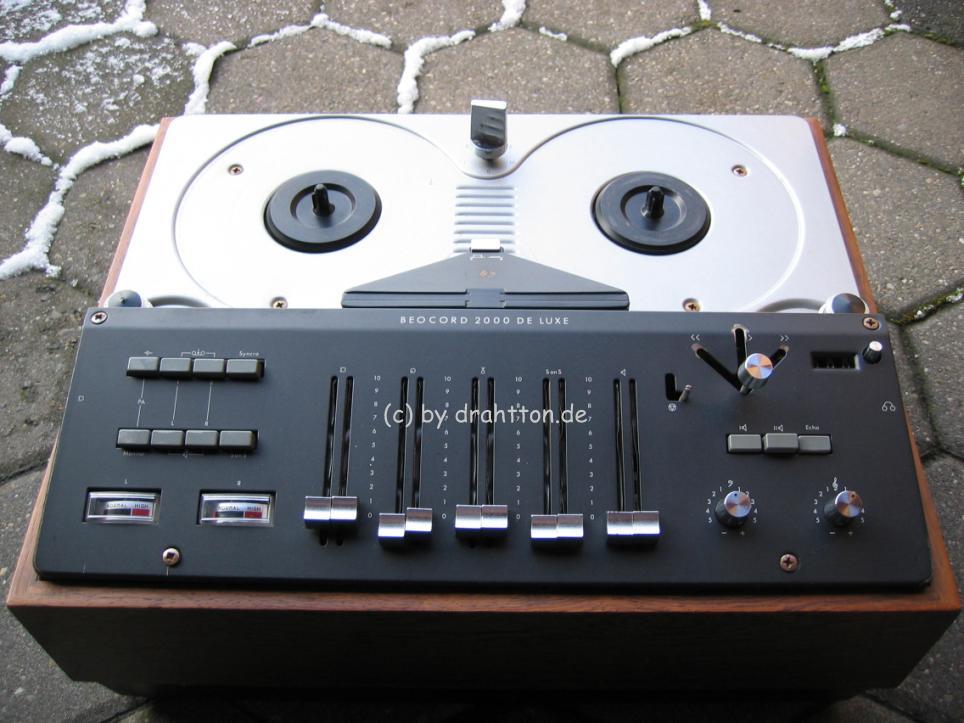
K5_5-1
www.drahtton.de
|
<- BEOCORD 1800 im Vergleich mit ReVox A77 |
Übersicht |
-> BEOCORD 2000 DE LUXE / BEOLAB/BEOMASTER 5000 / BEOLAB 2500 |
BEOCORD 2000 DE LUXE
Das BECORD 2000 war das erfolgsreichste und beliebteste Tonbandgerät, das B&O gebaut hat. Es war ausgestattet mit features, von denen einige bei proffessionellen Geräten bis Ende der 1970er Jahre nicht zu finden waren.
Beocord 2000 de Luxe K, 1965-1969

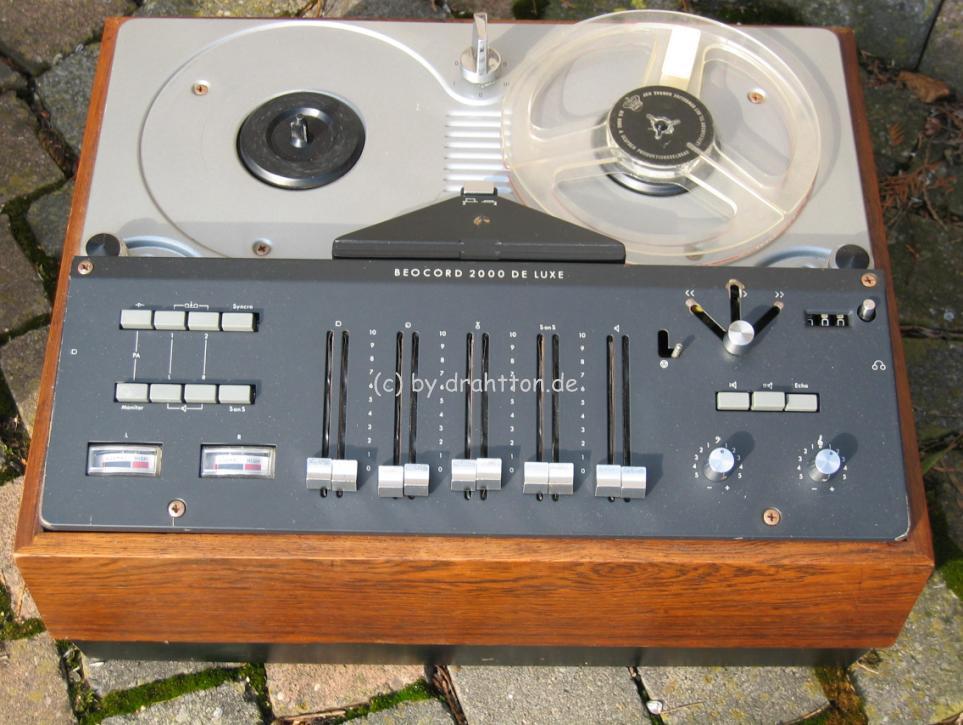
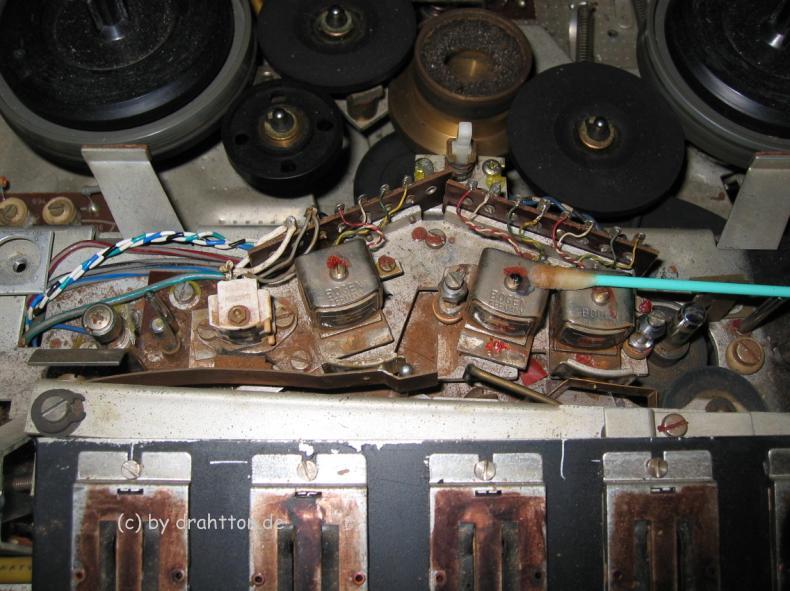
Dieses Bild zeigt deutlich Spuren eines harten Alltagseinsatzes.
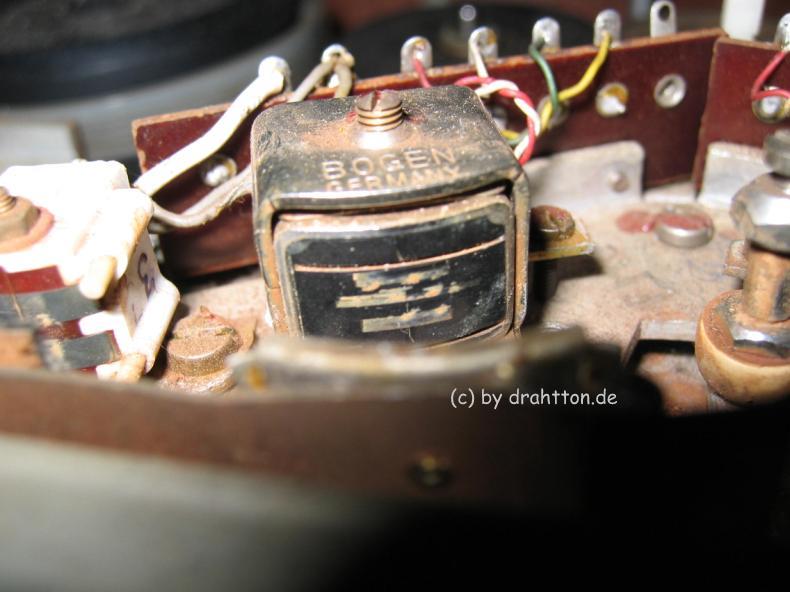
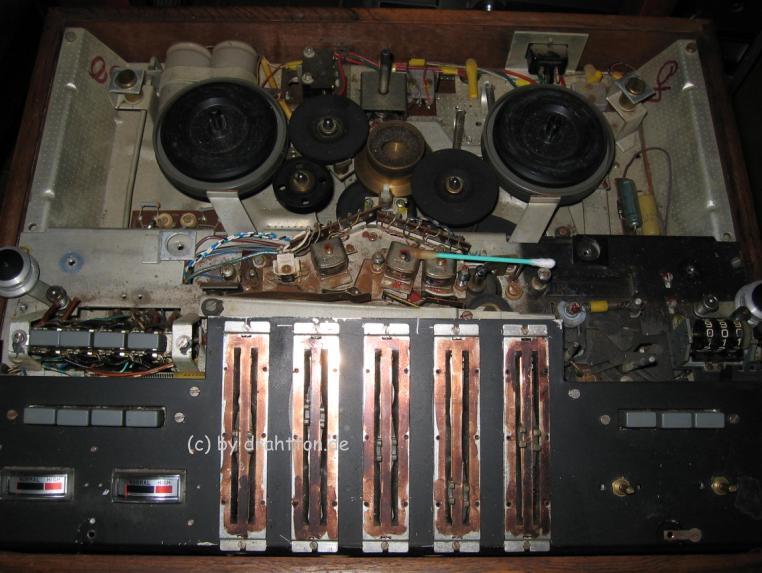
Beocord 2000 de Luxe : 1964-1965
Beocord 2000 de Luxe T: 1966-1967
Beocord 2000K DL , Beocord
2000 de Luxe K: 1965 - 1969
Beocord 2000 De Luxe K stereo tape
recorder; Type numbers: 4136, 4137
"One of the best
semi-professional fully transistorised hi-fi stereo tape recorders. It has
professional data for speed,
wow and flutter that meet international standards for studio tape recorders.
New modern design concepts distinguish
the Beocord 2000 de Luxe K from conventional tape reorders. Here are some of
them: 4-track recording/2-track and
4-track playback; built-in 4-channel mixer section with twin faders for both
mono and stereo recordings provides individual
control and mixing of microphone, gramophone, radio and line signal inputs.
These faders make it possible to balance
channels during recording. An aurally compensated twin fader makes it possible
to balance playback volume levels, too.
These features permit recordings of every kind, such as Multi-playback, or
sound-on sound; that is, rerecording from one
track to another whilst making another recording on the other track.
Synchro-playback - this feature consists of
synchronising two recordings on separate tracks which you do wish to mix by
recording, and may be used for language
laboratory purposes and for automatic control of lantern slides. Echo - adding
echo to both mono and stereo recordings.
The amplifier equipment is an
outstanding new system consisting of no less than seven fully transistorised
easily replaceable
amplifier units.
Monitoring: separate records and playback heads with individual amplifiers
permit both before-the-tape and off-the-tape
monitoring. Power output is 2 x 8 watts undistorted.
Frequency response:
7.5"/sec: 30-20 000 Hz (+/- 2 dB: 40 - 16 000Hz),
3.75"/sec: 30 - 16 000 Hz (+/- 2dB: 40 - 12 000Hz),
1.7/8"sec: 50 - 8 000Hz (+/- 2 dB: 50 - 6 000Hz)
Recording level is indicated by
two illuminated V.U. meters which indicate the sum of signals in each of the
two tracks that
can be recorded simultaneously.
Slack absorbers: Two smooth-running specially engineered slack absorbers take
up speeds.
Electronic protection circuit prevents damage due to electrical overloads. No
other tape recorder in this price bracket has
these professional standards for electrical and mechanical specifications. Fine
low-noise tape drive motor mounted on
rugged non-torsion steel chassis. Four tape heads, 4-track recording but - a
remarkable feature - the instrument plays back
both 2-track and 4-track tapes.
The erase head (long-life dual-gap ferrite erases "right to the
bottom" (70dB). The 2000 de Luxe permits recording from
one tape recorder to another, parallel recording on a number of tape recorders,
and simultaneous copying of both tracks.
The Beocord may also be used as: public address system, permanently installed
hi-fi control centre, and orchestra and
guitar amplifier." - taken from the 1967 - 1968 Bang & Olufsen product
catalogue (Read more on the BeoWorld
Connoisseurs' Club)
1965 - 1969: Beocord 2000 DL
1964 - 1965: Beocord 2000 de Luxe T
1966 - 1967: Beocord 1000
Beocord 2000 family
Beocord 2000K
Stereo tape recorder, 17/8, 33/4,
71/2 IPS, two or four track format, 2x6W
The Beocord 2000K was a
development of the Beocord Stereomaster. Although visually very similar, a number of important
changes had been made to improve the quality and usefulness of the machine.
Most of the printed panels had been redesigned
around the newer and better transistors that were becoming available, though
these panels were made interchangeable with the
earlier types. Two new types of microphone amplifier were offered, both with
transformer inputs.
The two versions were for
unbalanced and balanced microphones respectively, the latter being especially
useful if long microphone leads were used.
An automatic stop device was added to the deck so that playback or recording
was halted when the tape ran out. This was
operated by conductive silver foil attached to the tape. In addition, an extra
sensor, built into the entrance guide, stopped
the machine if the tape broke and at the end of fast winding.
A separate level control for multiple recording and echo, concentric with the
balance control, was fitted too. This allowed
the playback volume through the loudspeakers be adjusted independently from the
"sound on sound" recording level. A
new type of level meter that was easier to read was introduced too. Internally,
the most important change was that the
rewind idlers were replaced with a belt. This made it possible to offer a
different sized motor pulley that could be used
to make the machine suitable for 60Hz mains supplies.
The next stage in the development of this range of machines came with the
introduction of the Beocord 2000 De Luxe.
Beocord 2000T
Stereo tape recorder, 17/8, 33/4,
71/2 IPS, two or four track format, 2x6W
An updated form of the Beocord Stereomaster 610T. Technically, the improvements were the same as
those made to the Beocord 2000K.
Beocord 2000K De Luxe
(?-1970) Stereo tape recorder,
17/8, 33/4, 71/2 IPS, two or four track format, 2x6W
Type numbers: 4136, 4137
For this version of this long
running machine, B&O really excelled themselves. Those who thought that the
"De Luxe" part
of the name just meant a bit more chrome trim or restyled controls would have
been in for quite a surprise, for large and
important changes had been made in all the important areas of the design.
Most obviously, the sliding faders had been split in two, giving independent
control of the left and right channels. An extra
stereo fader had been added for "sound on sound" functions, which
could also be used to regulate the new "line" level input,
intended for the connection of a second recorder or to a quality amplifier such
as the Beolab 5000. Because of
the split
faders, the balance control was no longer necessary and so the design of the
two rotary controls was simplified, with one
for treble and one for bass. A ¼" stereo headphone socket was also added,
fed from the built-in power amplifier.
The two-track model was fitted with an extra head, to allow the playback of
four-track tapes. Four-track recordings could
not be made with this machine however. The new head was selected using a
pushbutton mounted
behind the head cover.
More refinements had been made to the preamplifier modules. The new units for
record players and radio tuners featured
a two-position switch for two different sensitivities. The record player
preamplifier could be used with both crystal and
B&O magnetic pickups, eliminating the need to offer two types. The switches
could be easily altered through holes in the
base of the machine.
Mechanically, changes were minimal, though curiously the belt drive for
rewinding that had been introduced with the previous
model was discontinued and the arrangement of two idler wheels returned. The
mechanical wow and flutter performance,
along with the speed accuracy, of the Beocord 2000 De Luxe was
guaranteed to reach the standards required for professional
use, a considerable achievement for a domestic machine.
In this form, the Beocord offered a mix of qualities that no similarly priced
machine could match. It represented the height
of perfection that could be achieved with available technology and offered the
quality and flexibility of a professional machine
in a compact, domestically acceptable package. The next version, the Beocord 2400, would be the
final model in the series.
Prices (rosewood)
1970: £160.13.0
Prices (teak)
1970: £159.12.0
Beocord 2000T De Luxe
(?-1970) Stereo tape recorder,
17/8, 33/4, 71/2 IPS, two or four track format, 2x6W
This machine was identical to the Beocord 2000K De Luxe,
except that it was fitted in a portable ("luggage") cabinet
like that used for the Beocord 2000T
and the Beocord Stereomaster 610T.
Price (1970): £165.18.0